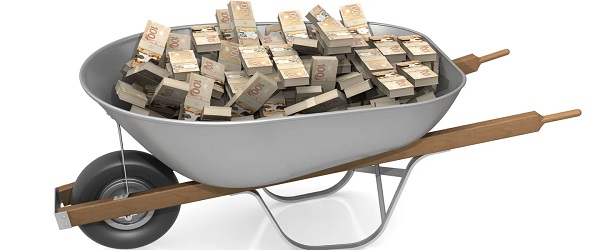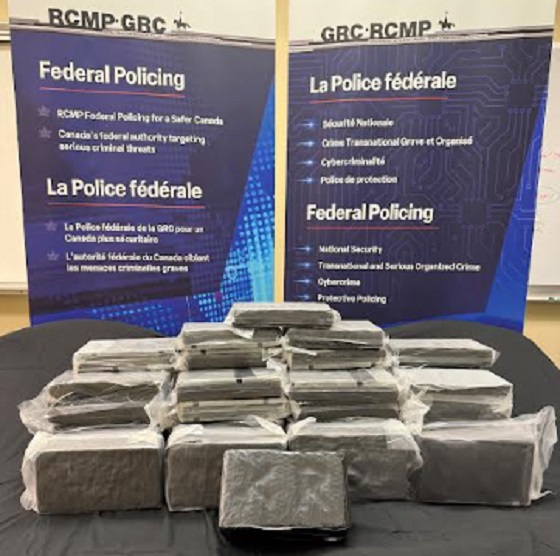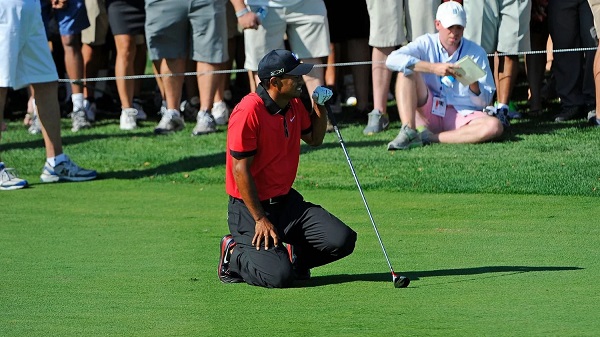Business
Canada’s combative trade tactics are backfiring

This article supplied by Troy Media.
Defiant messaging may play well at home, but abroad it fuels mistrust, higher tariffs and a steady erosion of Canada’s agri-food exports
The real threat to Canadian exporters isn’t U.S. President Donald Trump’s tariffs, it’s Ottawa and Queen’s Park’s reckless diplomacy.
The latest tariff hike, whether triggered by Ontario’s anti-tariff ad campaign or not, is only a symptom. The deeper problem is Canada’s escalating loss of credibility at the trade table. Washington’s move to raise duties from 35 per cent to 45 per cent on nonCUSMA imports (goods not covered under the Canada-United States-Mexico Agreement, the successor to NAFTA) reflects a diplomatic climate that is quickly souring, with very real consequences for Canadian exporters.
Some analysts argue that a 10-point tariff increase is inconsequential. It is not. The issue isn’t just what is being tariffed; it is the tone of the relationship. Canada is increasingly seen as erratic and reactive, negotiating from emotion rather than strategy. That kind of reputation is dangerous when dealing with the U.S., which remains Canada’s most important trade partner by a wide margin.
Ontario Premier Doug Ford’s stand up to America messaging, complete with a nostalgic Ronald Reagan cameo, may have been rooted in genuine conviction. Many Canadians share his instinct to defend the country’s interests with bold language. But in diplomacy, tone often outweighs intent. What plays well domestically can sound defiant abroad, and the consequences are already being felt in boardrooms and warehouses across the country.
Ford’s public criticisms of companies such as Crown Royal, accused of abandoning Ontario, and Stellantis, which recently announced it will shift production of its Jeep Compass from Brampton to Illinois as part of a US$13 billion U.S. investment, may appeal to voters who like to see politicians get tough. But those theatrics reinforce the impression that Canada is hostile to
international investors. At a time when global capital can move freely, that perception is damaging. Collaboration, not confrontation, is what’s needed most to secure investment in Canada’s economy.
Such rhetoric fuels uncertainty on both sides of the border. The results are clear: higher tariffs, weaker investor confidence and American partners quietly pivoting away from Canadian suppliers.
Many Canadian food exporters are already losing U.S. accounts, not because of trade rules but because of eroding trust. Executives in the agri-food sector are beginning to wonder whether Canada can still be counted on as a reliable partner, and some have already shifted contracts southward.
Ford’s political campaigns may win applause locally, but Washington’s retaliatory measures do not distinguish between provinces. They hit all exporters, including Canada’s food manufacturers that rely heavily on the U.S. market, which purchases more than half of Canada’s agri-food exports. That means farmers, processors and transportation companies across the country are caught in the crossfire.
Those who believe the new 45 per cent rate will have little effect are mistaken. Some Canadian importers now face steeper duties than competitors in Vietnam, Laos or even Myanmar. And while tariffs matter, perception matters more. Right now, the optics for Canada’s agri-food sector are poor, and once confidence is lost, it is difficult to regain.
While many Canadians dismiss Trump as unpredictable, the deeper question is what happened to Canada’s once-cohesive Team Canada approach to trade. The agri-food industry depends on stability and predictability. Alienating our largest customer, representing 34 per cent of the global consumer market and millions of Canadian jobs tied to trade, is not just short-sighted, it’s economically reckless.
There is no trade war. What we are witnessing is an American recalibration of domestic fiscal policy with global consequences. Canada must adapt with prudence, not posturing.
The lesson is simple: reckless rhetoric is costing Canada far more than tariffs. It’s time to change course, especially at Queen’s Park.
Dr. Sylvain Charlebois is a Canadian professor and researcher in food distribution and policy. He is senior director of the Agri-Food Analytics Lab at Dalhousie University and co-host of The Food Professor Podcast. He is frequently cited in the media for his insights on food prices, agricultural trends, and the global food supply chain
Troy Media empowers Canadian community news outlets by providing independent, insightful analysis and commentary. Our mission is to support local media in helping Canadians stay informed and engaged by delivering reliable content that strengthens community connections and deepens understanding across the country
Business
Flying saucers, crystal paperweights and branded apples: inside the feds’ promotional merch splurge

By Jen Hodgson
“It’s like the government had a contest to see which department could come up with the dumbest way to spend taxpayers’ money and they all won”
Bamboo toothbrushes and beeswax wraps. Temporary tattoos and hockey pucks. Maple candy and “chocolat bon bons.” Tractor-shaped air fresheners and Yukon soap. Moccasins and socks.
The feds seem eager to slap a logo on just about anything and pay any price to make it happen. Federal departments and Crown corporations spent about $13 million on branded promotional items since January 2022, according to government records obtained by the Canadian Taxpayers Federation.
“It’s like the government had a contest to see which department could come up with the dumbest way to spend taxpayers’ money and they all won,” said Franco Terrazzano, CTF Federal Director. “This is what happens when you have too many bureaucrats with too many tax dollars.”
The government shelled out $207,000 on various hats across all departments, $607,000 on different types of bags and $40,500 on Yeti and Stanley drinkware.
In an apparent shout out to former prime minister Justin Trudeau, the feds collectively splurged on $51,800 worth of socks.
The feds spent $25,600 on maple syrup and maple products.
The government released the data in response to an order paper question submitted by Conservative MP Michelle Rempel Garner (Calgary Nose Hill). Rempel Garner asked for records of all branded or promotional products purchased by departments or Crown corporations from Jan. 1, 2022, to June 6, 2025.
The CTF reviewed the 900-page release package – a virtual catalogue of capricious spending.
The Royal Canadian Mounted Police was the biggest spender by far, with a merch price tag of $4 million. However, the Mounties declined to submit a detailed inventory of expenditures.
Canadian Heritage was next in line for the feds’ spending spree. The department dropped about $2 million on purchases including branded hockey pucks, candle holders and lip balm. And not even the good kind of lip balm – it’s specifically “without sun protection.”
National Defence spent nearly $1.4 million on branded merch. That works out to about $34,000 on average each month.
Farm Credit Canada spent a total of $870,500, including $32,600 on tractor shaped air fresheners.
Export Development Canada blew $4,100 on climate change card games, $3,400 on Yukon soap, $10,700 on apple peel notebooks with bamboo pens, $4,500 on branded apples and $1,100 on “chocolat bon bons.”
Destination Canada spent $26,900 on moccasins, $13,300 on candles and $9,000 on charcuterie boards. Natural Resources Canada spent $3,200 on phone wallets and $1,350 on temporary tattoos.
VIA Rail spent $11,400 on “Pride” paraphernalia and $2,600 on belt bags. The Department of Immigration spent $12,000 on bamboo toothbrushes and terry towels for various “outreach events” and the Masters Indigenous Games.
The Royal Canadian Mint wrote a cheque for $41,800 for leather journals and laser pens. The National Capital Commission spent $12,000 on bicycle lights. Canada Lands Company spent $1,800 on flying saucers.
Canadian Race Relations Foundation dropped $2,400 on wool-blend branded toques and $2,800 for branded fleece blankets – for a board meeting.
The list goes on and on.
Prairies Economic Development Canada dipped into the public purse to the tune of $1,300 for bamboo cutlery and $3,800 for beeswax wraps. Pacific Economic Development Canada dropped $12,000 on beeswax wraps alone.
But remember, it’s hard being a government bureaucrat. Across all departments, the feds bought $11,900 worth of stress balls.
“Government bureaucrats dropping thousands of dollars on stress balls really stresses taxpayers out,” Terrazzano said. “Unless the temporary tattoos show the national debt to remind bureaucrats to cut spending, it’s a waste of money.
“Prime Minister Mark Carney needs to tell government bureaucrats to knock it off with the card games, charcuterie boards, laser pens and flying saucers.”
Some federal agencies refused to spill the beans on their branding budgets, leaving taxpayers to imagine a clandestine empire of logoed mugs and pens.
CBC/Radio-Canada did not bother to track their spending on promotional materials at all. The CBC claims it didn’t have time to provide accurate information in response to the request.
The lack of transparency didn’t end there. The Canada Border Services Agency and the National Arts Centre also claimed they lacked the time and resources to submit expenditure details.
The Canada Mortgage and Housing Corporation had “nothing to report.” Parks Canada dropped $847,000 on promotional items, but provided no details on itemized spending.
The Canadian Security Intelligence Services confirmed it purchased promotional material, but declined to say what it bought or how much it spent – because, you know, it’s probably spy stuff.
“Carney said he’s going to cut waste and if he’s serious he would put the government’s promotional merch spending spree on the chopping block,” Terrazzano said. “Anyone who claims there’s no fat to cut needs to be reminded that the government is spending millions of dollars on branded merch.”
Business
Trans Mountain executive says it’s time to fix the system, expand access, and think like a nation builder

Mike Davies calls for ambition and reform to build a stronger Canada
A shift in ambition
A year after the Trans Mountain Expansion Project came into service, Mike Davies, President and Chief Operating Officer at Trans Mountain, told the B.C. Business Summit 2025 that the project’s success should mark the beginning of a new national mindset — one defined by ambition, reform, and nation building.
“It took fifteen years to get this version of the project built,” Davies said. “During that time, Canadian producers lost about $50 billion in value because they were selling into a discounted market. We have some of the world’s largest reserves of oil and gas, but we can only trade with one other country. That’s unusual.”
With the expansion now in operation, that imbalance is shifting. “The differential on Canadian oil has narrowed by about $13 billion,” he said. “That’s value that used to be extracted by the United States and now stays in Canada — supporting healthcare, reconciliation, and energy transformation. About $5 billion of that is in royalties and taxes. It’s meaningful for us as a society.”
Davies rejected the notion that Trans Mountain was a public subsidy. “The federal government lent its balance sheet so that nation-building infrastructure could get built,” he said. “In our first full year of operation, we’ll return more than $1.3 billion to the federal government, rising toward $2 billion annually as cleanup work wraps up.”
At the Westridge Marine Terminal, shipments have increased from one tanker a week to nearly one a day, with more than half heading to Asia. “California remains an important market,” Davies said, “but diversification is finally happening — and it’s vital to our long-term prosperity.”
Fixing the system to move forward
Davies said this moment of success should prompt a broader rethinking of how Canada approaches resource development. “We’re positioned to take advantage of this moment,” he said. “Public attitudes are shifting. Canadians increasingly recognize that our natural resource advantages are a strength, not a liability. The question now is whether governments can seize it — and whether we’ll see that reflected in policy.”
He called for “deep, long-term reform” to restore scalability and investment confidence. “Linear infrastructure like pipelines requires billions in at-risk capital before a single certificate is issued,” he said. “Canada has a process for everything — we’re a responsible country — but it doesn’t scale for nation-building projects.”
Regulatory reform, he added, must go hand in hand with advancing economic reconciliation. “The challenge of our generation is shifting Indigenous communities from dependence to participation,” he said. “That means real ownership, partnership, and revenue opportunities.”
Davies urged renewed cooperation between Alberta and British Columbia, calling for “interprovincial harmony” on West Coast access. “I’d like to see Alberta see B.C. as part of its constituency,” he said. “And I’d like to see B.C. recognize the need for access.”
He summarized the path forward in plain terms: “We need to stem the exit of capital, create an environment that attracts investment, simplify approvals to one major process, and move decisions from the courts to clear legislation. If we do that, we can finally move from being a market hostage to being a competitor — and a nation builder.”
-

 Business3 hours ago
Business3 hours agoTrans Mountain executive says it’s time to fix the system, expand access, and think like a nation builder
-

 Alberta1 day ago
Alberta1 day agoCoutts border officers seize 77 KG of cocaine in commercial truck entering Canada – Street value of $7 Million
-

 Business1 day ago
Business1 day agoThe painful return of food inflation exposes Canada’s trade failures
-

 Alberta13 hours ago
Alberta13 hours agoPremier Smith sending teachers back to school and setting up classroom complexity task force
-

 Sports2 days ago
Sports2 days agoWhile Ohtani marches into MLB history, Nippon league’s shame lingers
-

 Alberta12 hours ago
Alberta12 hours agoThousands of Albertans march to demand independence from Canada
-

 Addictions4 hours ago
Addictions4 hours agoThe Shaky Science Behind Harm Reduction and Pediatric Gender Medicine
-

 Crime12 hours ago
Crime12 hours agoSuspect caught trying to flee France after $100 million Louvre jewel robbery












